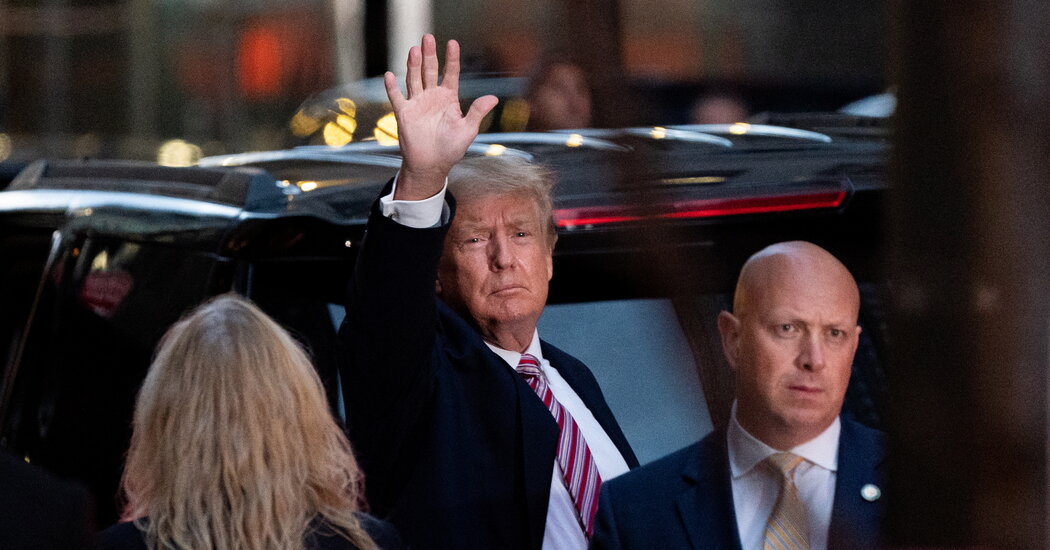
Former President Donald J. Trump was deposed under oath for four and a half hours this week in connection with a lawsuit filed by a group of protesters who said his bodyguards attacked them in 2015.
The questioning took place in a conference room on the 25th floor of Trump Tower in Manhattan on Monday, according to one of the plaintiffs’ lawyers, Benjamin N. Dictor.
Mr. Dictor said that the former president had been asked about his relationship with other defendants — including his longtime personal bodyguard Keith Schiller — as well as a witness in the case, Matthew Calamari. Mr. Calamari is an executive at the Trump Organization who prosecutors at the Manhattan district attorney’s office have been weighing whether to charge as part of their long-running investigation into Mr. Trump and his family business.
“We think that the fact that Donald J. Trump sat for deposition yesterday is a significant point, simply because this is the first time that the former president has been subject to judicial process since taking office,” Mr. Dictor said.
In a statement released on Monday, Mr. Trump called the suit “baseless,” and said that the plaintiffs “have no one to blame but themselves.” But he added that he had been “pleased to have had the opportunity to tell my side of this ridiculous story.”
Mr. Dictor, a labor lawyer, also represents the New York NewsGuild, a union representing the employees of various news publications including The New York Times.
Other topics that may have arisen in the deposition could also be of interest to investigators and to the general public, including any discussion of the former president’s net worth, which is relevant to the case because the plaintiffs have asked for punitive damages.
It is unclear whether the former president’s testimony will become public. Mr. Trump’s lawyers could request that it be sealed.
The protesters’ lawsuit has had a long life span. It was filed in 2015, shortly after the demonstration at Trump Tower, in which the five plaintiffs, disturbed by Mr. Trump’s campaign trail comments about Mexican people, showed up at Trump Tower holding signs that said “Make America Racist Again.”
Two of them, seeing that the white supremacist David Duke had spoken out in support of Mr. Trump’s policies, decided to wear costumes resembling the outfits worn by the Ku Klux Klan.
The plaintiffs said that Mr. Schiller and others working for Mr. Trump ripped away their signs, and punched and briefly choked one of them. Mr. Schiller has argued that it was the protesters who initially attacked him.
Lawyers for Mr. Trump tried to dismiss the lawsuit. When that was unsuccessful, they tried, in vain, to argue that the candidate could not be held personally responsible for his employees’ actions. A judge rejected that argument, leading, more than six years after the demonstration, to Mr. Trump’s questioning this week.
Lawyers representing Mr. Trump in the suit did not immediately return a request for comment.



